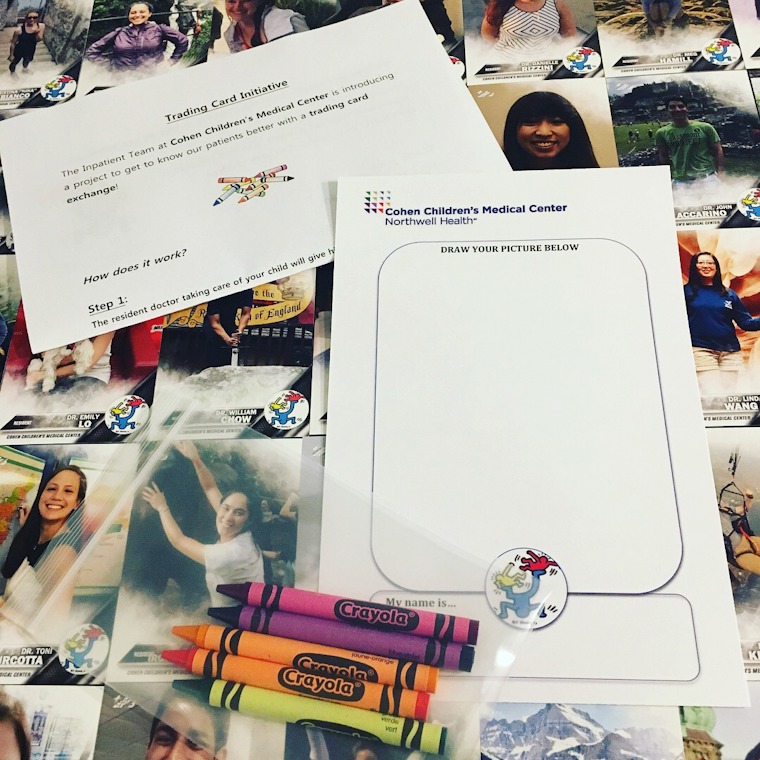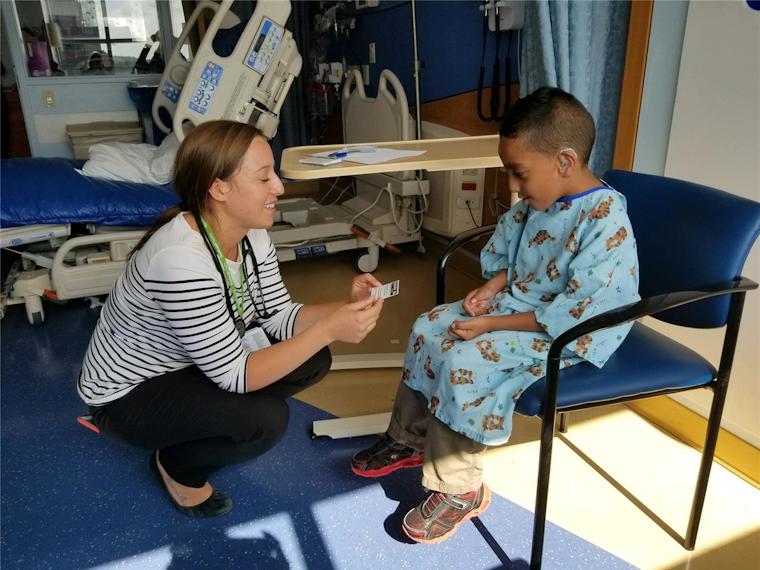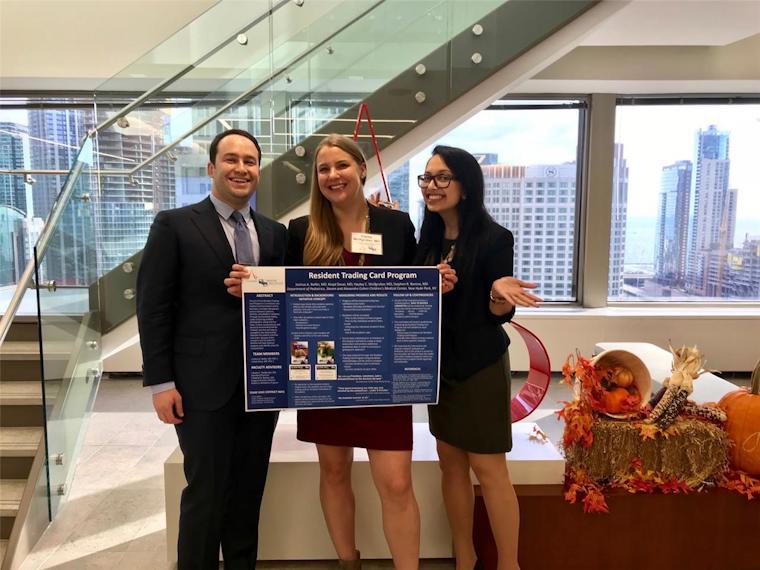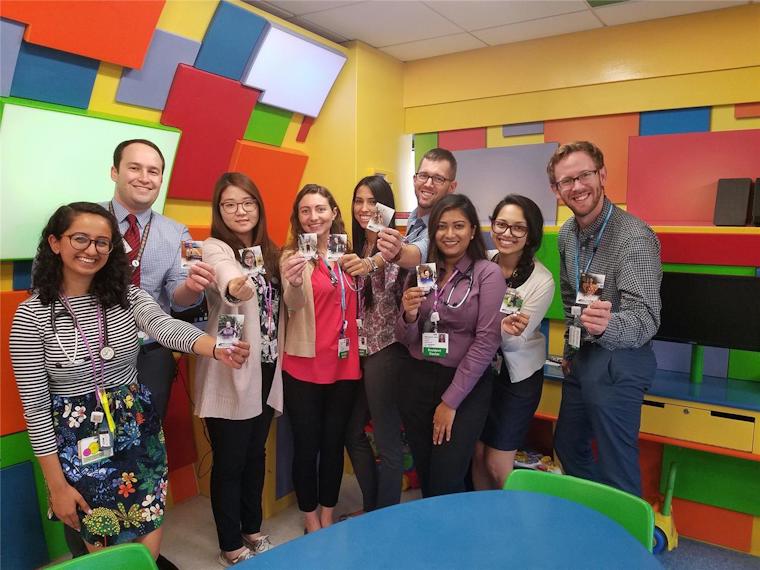This is one in a series of project profiles of the ACGME’s Back to Bedside initiative, which empowers residents and fellows to develop innovations that foster meaning and joy in work and engage their patients on a deeper level.
Deep connections can be made between people by sharing the most basic information. Little nuggets, like a favorite hobby or favorite vacation spot, can be the trigger for conversation and friendship.
This was the catalyst for an innovative program by resident team members at Cohen Children’s Medical Center, led by Joshua Belfer, MD and Kinjal Desai, MD. They were inspired to create their project during the winter months of their first year of residency when they started to experience burnout.
The team created the Resident Trading Card Program, which features cards, similar to baseball cards, with fun pictures of each resident, as well as fun facts, such as their favorite ice cream flavor, where the resident is from, and hobbies. The inpatient teams can use these cards to introduce themselves to their patients, who are given the opportunity to create their own trading cards to teach their physicians about who they are and what they like.
“We wanted to do something engaging and exciting that would help us connect with our patients on a more personal level,” said Dr. Belfer. “We wanted something that reminded us of the reason we went into medicine in the first place: our patients.”
The team has collected more than 100 anecdotal stories of resident-patient interactions that have been enhanced thanks to the card sharing. The cards have been an important tool to encourage residents to learn more about their patients outside of their medical conditions, while in turn allowing patients to learn more about them. This closer connection between the residents and their patients is at the heart of a greater sense of meaning in work.
“We’ve collected many stories that have a similar theme of the cards making a real difference in breaking down barriers,” said Dr. Belfer. “It doesn’t take much to build a bridge to another person. For example, the card exchange showed one resident and patient that they share the same favorite color. This led to a nail-painting moment between them. This wouldn’t have happened without that first connection about their favorite color.”
Dr. Belfer said that projects like this are important because he and most of his colleagues became doctors to work with patients. The new models of medicine and technology have separated the doctor from the patient, he said, and small steps like this make a difference.
The program is part of the ACGME’s Back to Bedside initiative, which empowers residents and fellows to develop transformative ideas and projects that foster meaning and joy in work through deeper engagements with patients. The initiative provides financial and administrative support to innovations that can be broadly disseminated, and solutions that can be implemented at multiple institutions. More than 60 projects across two cycles have received funding through Back to Bedside.
Back to Bedside was created in response to the trend of patient care and academic learning occurring away from the patient bedside. External pressures, including administrative burdens, electronic health record requirements, production pressures, built-in inefficiencies, and other local influences are responsible for this shift in the delivery of medical education and patient care.
Back to Bedside hopes to support processes, initiatives, curricula, projects, or other activities designed and implemented by and for residents and fellows. By fostering activities that build a sense of meaning in work and reminding residents and fellows of the reason they entered the profession in the first place, this initiative hopes to encourage all learners to look at how they can improve their learning environment and their own—and their patients’—well-being.










